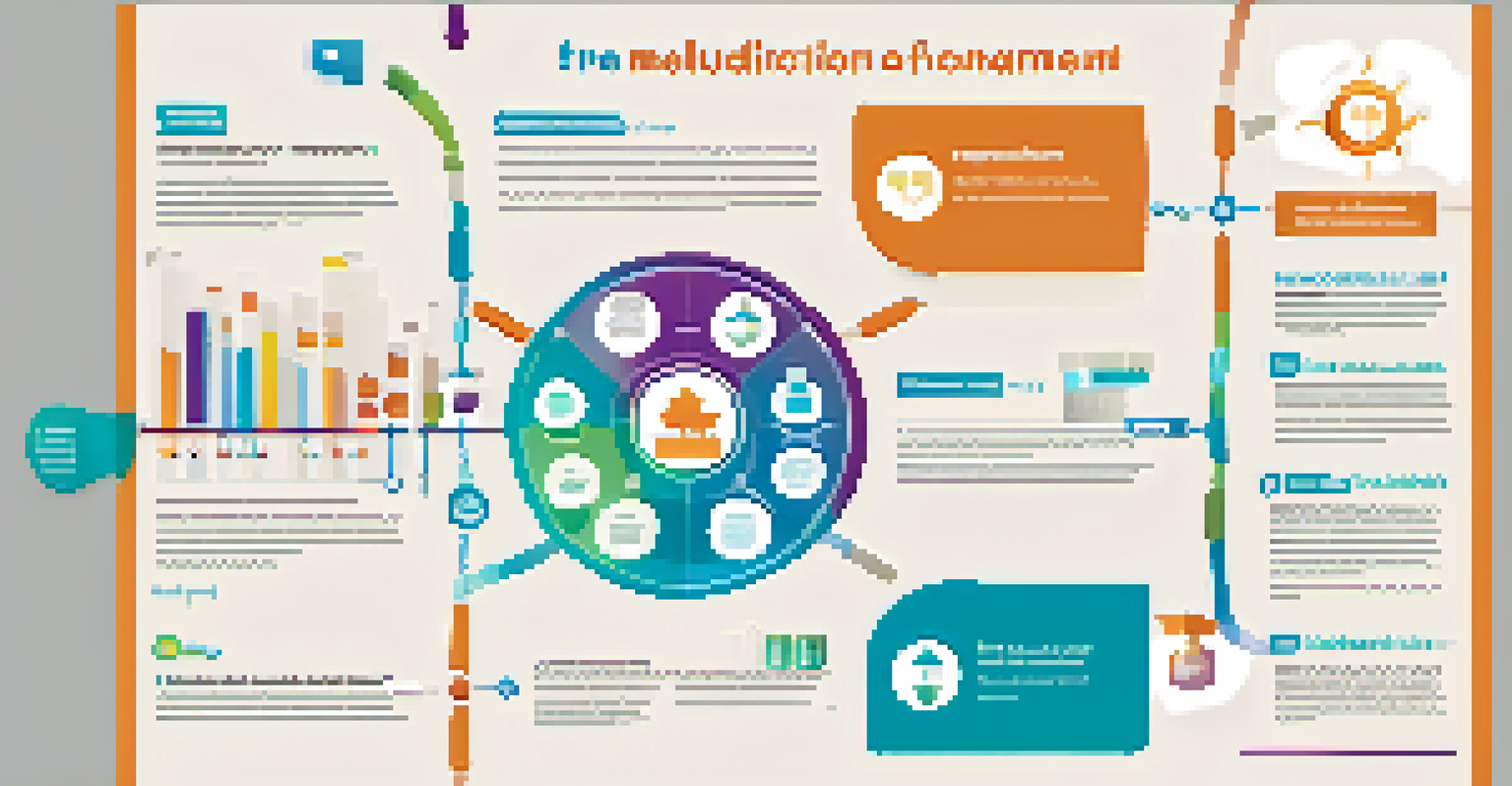Patient Engagement: A Critical Component of Safety

Understanding Patient Engagement in Healthcare
Patient engagement refers to the active involvement of patients in their own healthcare decisions. It encompasses a range of activities, from understanding treatment options to participating in health monitoring. When patients actively engage, they are more likely to adhere to treatment plans and recognize warning signs, which ultimately enhances safety.
Engagement is the key to unlocking the potential for safety in healthcare.
Take, for instance, a patient managing a chronic condition like diabetes. By understanding their condition and how to monitor blood sugar levels, they can make informed decisions that reduce the risk of complications. This empowerment not only boosts their confidence but also fosters a sense of responsibility for their own health.
In essence, patient engagement transforms healthcare from a one-sided interaction into a collaborative effort. This partnership between healthcare providers and patients is essential for creating an environment where safety is prioritized and maintained.
The Link Between Engagement and Safety Outcomes
Research consistently shows a strong correlation between patient engagement and improved safety outcomes. Engaged patients are less likely to experience medication errors or adverse events because they are actively involved in their care. This proactive participation can lead to earlier detection of potential issues and prompt intervention.

For example, consider a patient who has been educated about their medication regimen. They are more likely to recognize if a medication doesn’t seem right or if they experience unusual side effects. This vigilance can prevent serious safety incidents and foster a culture of open communication with healthcare providers.
Active Patient Engagement Enhances Safety
When patients actively participate in their healthcare decisions, they are more likely to adhere to treatment plans, leading to improved safety outcomes.
Thus, patient engagement is not just a nice-to-have; it's a critical component of a safety-first approach in healthcare. By prioritizing engagement, healthcare systems can significantly reduce risks and enhance the overall patient experience.
Barriers to Patient Engagement in Safety
Despite its importance, several barriers hinder effective patient engagement. These may include lack of health literacy, language barriers, and limited access to healthcare resources. When patients don’t fully understand their conditions or treatment options, their ability to engage meaningfully is compromised.
The greatest danger in times of turbulence is not the turbulence; it is to act with yesterday's logic.
Imagine a patient who receives medical information in complex jargon. Without clear explanations, they may feel overwhelmed and disengaged, which can lead to potential safety risks. This highlights the need for healthcare providers to simplify communication and ensure that information is accessible and understandable.
Addressing these barriers is essential for fostering an environment where patient engagement thrives. By identifying and mitigating obstacles, healthcare providers can create more inclusive practices that enhance safety for all patients.
Strategies for Enhancing Patient Engagement
To enhance patient engagement, healthcare providers can implement strategies that encourage active participation. One effective approach is to use shared decision-making, where patients are involved in treatment choices alongside their healthcare team. This collaboration fosters trust and empowers patients to take ownership of their health.
Another strategy is to provide educational resources tailored to the patient’s understanding level. Utilizing visual aids, easy-to-read brochures, or even digital tools can help bridge the knowledge gap and encourage questions. For instance, a simple infographic about medication management can demystify the process and motivate patients to engage more actively.
Barriers Hinder Patient Involvement
Challenges such as health literacy and language barriers can prevent meaningful patient engagement, which is essential for safety.
Ultimately, these strategies not only enhance engagement but also improve safety outcomes. By creating a supportive environment, healthcare providers can facilitate meaningful interactions that prioritize patient involvement.
Technology's Role in Patient Engagement
Technology plays a pivotal role in fostering patient engagement, especially in today's digital age. Telehealth platforms, patient portals, and mobile health apps provide patients with easy access to their health information and resources. This convenience allows patients to stay informed and engaged in their care, even from the comfort of their homes.
For example, a patient can use a mobile app to track their symptoms, medication schedules, and appointments. This real-time data not only keeps them informed but also enables them to communicate effectively with their healthcare providers. Such tools empower patients to take an active role in their health management.
Moreover, technology can facilitate better communication between patients and providers, enhancing collaboration and safety. By leveraging these digital tools, healthcare organizations can create a more engaged patient population, ultimately leading to better safety outcomes.
The Impact of Patient Feedback on Safety Improvement
Patient feedback is a valuable resource for improving safety in healthcare settings. When patients share their experiences, they provide insights that can help identify potential safety issues and areas for improvement. This feedback loop is essential for fostering a culture of safety and accountability.
Consider a hospital that regularly collects patient feedback through surveys. By analyzing this data, they can pinpoint trends, such as common complaints about medication administration. Addressing these issues proactively can lead to significant safety enhancements and a better overall patient experience.
Technology Empowers Patient Participation
Digital tools like telehealth and mobile apps provide patients with convenient access to their health information, fostering greater engagement and communication with providers.
Encouraging patient feedback not only empowers patients but also enables healthcare providers to continuously improve their practices. This collaborative approach to safety ensures that patient voices are heard and acted upon, creating a safer healthcare environment.
Conclusion: Prioritizing Patient Engagement for Safety
In conclusion, patient engagement is a critical component of safety in healthcare. By actively involving patients in their care, healthcare providers can enhance safety outcomes and reduce risks. This partnership leads to better communication, informed decision-making, and a culture of shared responsibility for health.
As we've explored, various strategies can be employed to foster engagement, from utilizing technology to encouraging patient feedback. By addressing barriers and implementing effective practices, healthcare organizations can ensure that patients feel empowered and valued in their care journey.

Ultimately, prioritizing patient engagement is not just beneficial for individuals but is essential for creating a safer healthcare system as a whole. Together, we can build a future where patient safety is a shared goal, driven by collaboration and understanding.